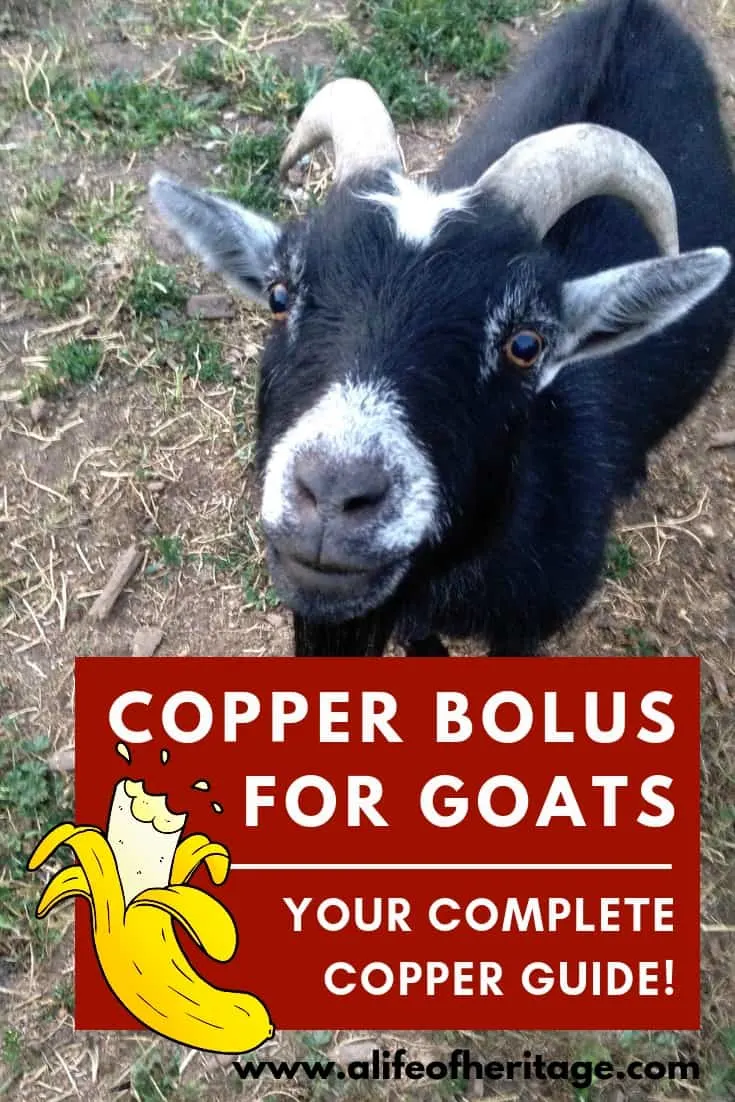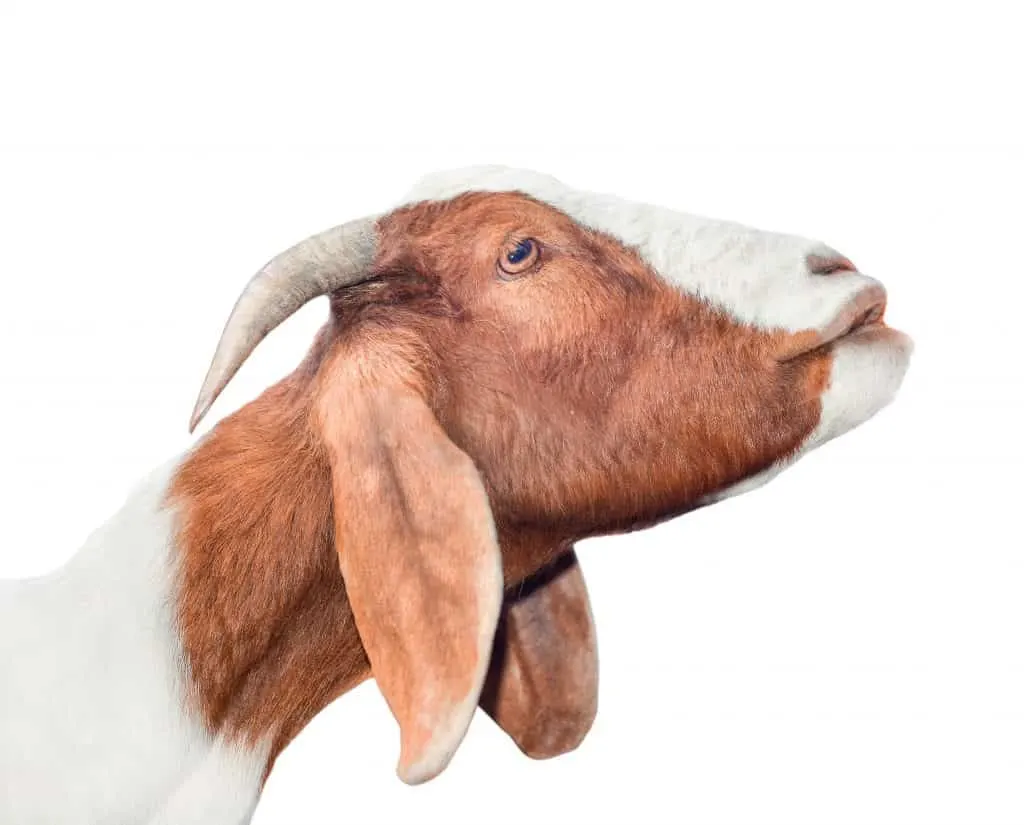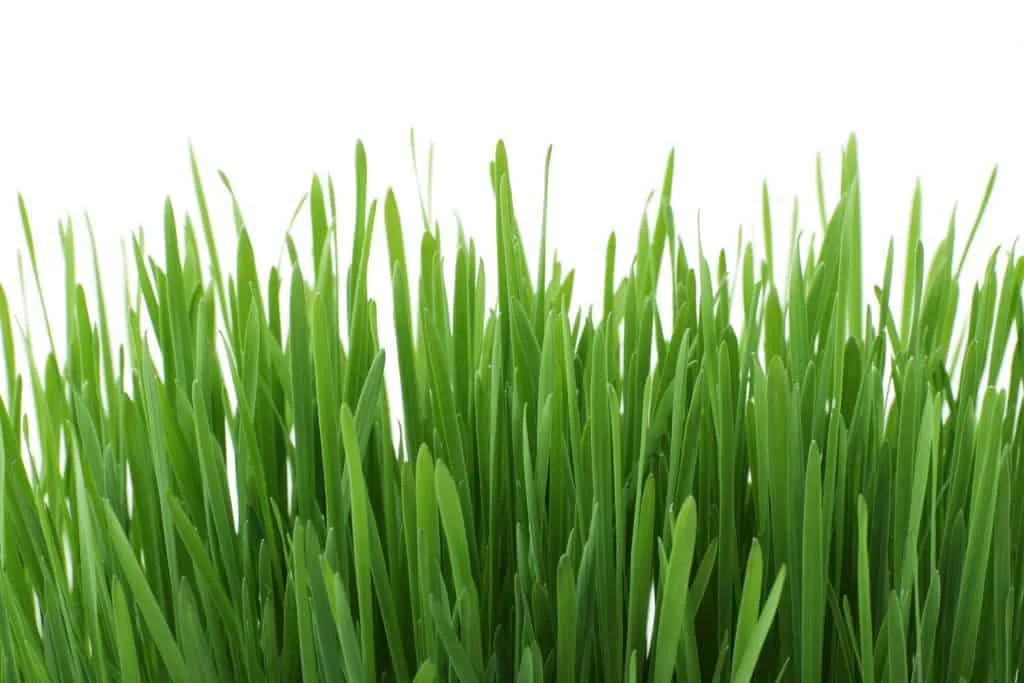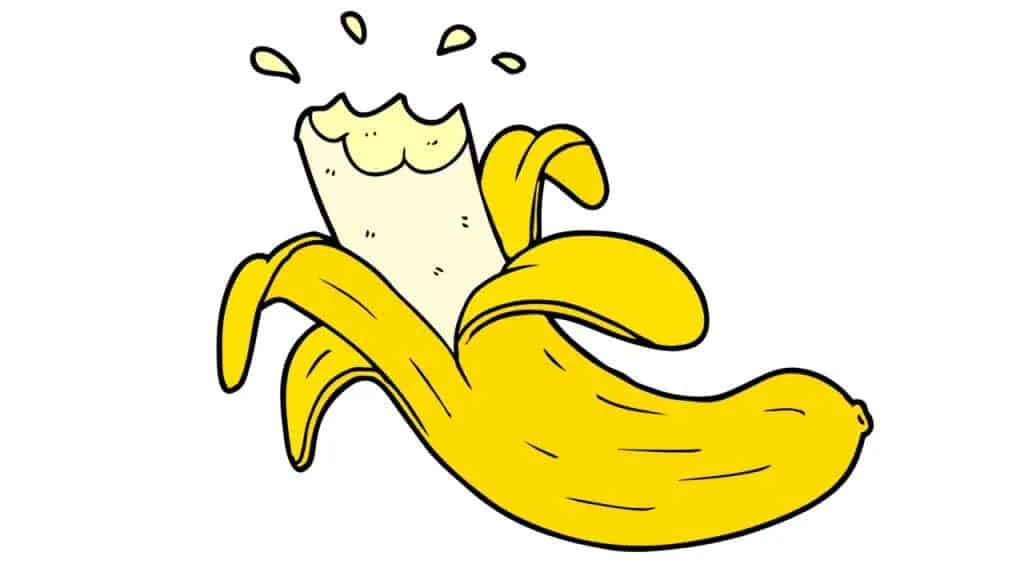Copper is one of the most important minerals your goats need. This post helps round out the information on my raising goats resource page. You need to be prepared to diagnose if your goat is copper-deficient and why and how to get them back to health and keep them there. You may find that copper bolus for goats needs to be a regular part of your goat health care.
Do my goats need copper?
Yes. Goats need copper, which can be given as a supplement like these copper boluses. And actually, they need more copper than originally thought.
Are goats copper sensitive?
No. They do need copper to live and function properly. But there is a possibility of copper toxicity, so be sure to read that section down below.
How Important is Copper in Goats?
Well, it’s essential to many factors in the health of your goat. Copper aids in the proper development of bone growth, their central nervous system and the color of their hair.
And without copper, the symptoms below will begin to show.

What are the symptoms of copper deficiency in goats?
- Their hair color will change. It will fade, lose its original color, lose luster and look dull.
- Black goats → Reddish
- Red → Gold
- Gold → Cream
- Cream → White
- Their tail will lose hair. The tip of their tail will lose hair and look like a fish-tail.
- Hair loss. Bare skin on the face, usually on the bridge of the nose or around the eyes.
- Parasitic overload. Parasites become hard to contain and are continually a problem.
- Growing Kids:
- Poor appetite
- Insufficient weight gain
- Weight loss
- Adults:
- Poor milk producers
- Occasional diarrhea
- Anemic
- Unthrifty
- Difficulty conceiving
- Potential abortions
If you like this information, my YouTube channel is full of even more goat information. Please click this link: Delci | A Life of Heritage and subscribe! You can also click this link to watch this information on YouTube: Copper Bolus for Goats Video on YouTube
*TIP: Record when you give copper to your goat management binder below and then you will never forget when you gave it and when you need to give it again!
Goat Essential ↓
Goat Management Binder
You are organized. You are knowledgeable. You are proactive. This is how. Click below to get this binder in your hands to avoid common errors that affect your goat's health. These records are your freedom and your goat's optimal health.
Types of Copper Deficiency in Goats
There are four types of copper deficiency. Here’s what you need to know.
→ Primary Copper Deficiency
Primary copper deficiency will become a problem when the levels of copper are low in the soils and the forages you feed them.
→ Secondary Copper Deficiency
When the copper levels are sufficient in the soil and forages, but there are other minerals that are binding the absorption of copper, this is called a secondary copper deficiency.
The minerals that are known copper antagonists are iron, lead, manganese, cadmium, sulfates, and molybdenum.
My goats will suffer from a secondary copper deficiency if I don’t stay on top of their copper intake. Our well water is very high in iron and copper and this inhibits the absorption of copper. You can read more about this here: How Your Water Can Affect Your Goat Herd
Secondary copper deficiency tends to be more responsive to treatment than primary copper deficiency.
→ Congenital Copper Deficiency
When kids do not get sufficient copper amounts when they are in utero, they will suffer from congenital copper deficiency. You will see them born with a swayback, muscle tremors, head shaking, standing unsteadily or can’t stand at all and they may grind their teeth. They can sometimes nurse and can see and hear but they will probably have low blood sugar and low body temperatures.
Sadly, they can commonly have bone abnormalities, and they will not recover because of how they were formed inside the womb. Even if they can nurse, they usually don’t live longer than a few weeks.
→ Delayed Copper Deficiency
Some kids will display signs of copper deficiency several months after birth, usually around 3 months. This can be shocking because they appeared fine at birth but then begin to show signs of incoordination, leg weakness, atrophied muscles and tremors. This usually begins to show up in the back legs and they will pull themselves around with their front legs. If they do have issues with their front legs, they will spend a lot of time on their front knees.
With delayed copper deficiency, they usually die from other secondary problems like pneumonia. And like many goat problems, it can be confusing to diagnose because it mimics other diseases like CAE, Listeriosis, or muscular dystrophy.
Reasons for Copper Deficiency in Goats
→ Low copper in soil/forage
As mentioned above, your goats may suffer from a lack of copper because of low levels found in the soil in your area, which results in the grass and hay they eat also being low in copper. You need to know your area to find out if you live in a copper-deficient area. You can find this out by calling your local extension agent.
→ Interference with copper absorption
The biggest interference you will probably find will be with your water source. Especially your well water. Many times wells are high in minerals and those minerals can actually be hindering and binding the copper from absorbing into their body. If you find that your goats are struggling with their health, seemingly for no reason at all, this may be the culprit.
→ No loose minerals out
Loose minerals are so, so very important to your goat’s health. If you don’t know all you need to know about them, follow this link: Your Complete Goat Mineral Guide
And if you don’t read the article in the link above, please know that it is completely ineffective to feed products that are labeled for sheep and goats. Sheep very easily get copper toxicity and so the products labeled for both, do not have near enough copper for goats.
How to track your goat health and copper dosages
It is imperative to keep good records of your individual goats in your goat herd. We are all so busy, it’s just impossible to think that we can keep all the information stored in our heads somewhere. The best way to be accurate is to use a goat health and information binder like this one. You will never have to guess when you last gave your goats boluses or shots or trimmed their hooves. Everything at a glance and your goat herd health documented and protected.
Goat Essential ↓
Goat Management Binder
You are organized. You are knowledgeable. You are proactive. This is how. Click below to get this binder in your hands to avoid common errors that affect your goat's health. These records are your freedom and your goat's optimal health.
Can copper be given to pregnant does?
Yes. Pregnant does can be given copper. You can give them in any of the four ways written below.
Four ways to give copper to goats:
It can be given in three ways:
- Copper glycinate given Sub-cutaneously (SQ). (Can be given to newborns as well.)
- Copper sulfate given orally in drinking water.
- Copper bolus given orally.
- Loose minerals should always be available free choice.
- “Full feed” should not have more than 15-20 ppm of copper
- But loose mineral can have as much as 1500 ppm of copper
- Test your forage for copper levels before you decide how much copper should be in your feed and mineral packages
What does copper bolus do for goats?
Copper boluses are easy to give goats. Copper boluses are filled with tiny copper rods that sink to the bottom of the rumen and are slowly released over a period of time, usually between 6-8 months. You can watch how to give a bolus to a goat in the video on this page.
There are two ways to give a bolus to a goat:
- Bolus Gun
- Like this one: Bolus Gun
- Copper bolus options: Copper Bolus for Goats
- The bolus is put into the tip of the balling gun, it is pushed to the back of the goat’s throat, and then it is pushed down their throat. This is an easy way to give medicine that keeps your fingers away from their very, very sharp back teeth.
- Hidden in a Treat
- The bolus pill or the bolus ingredients can be put inside one of these options below. Some goats may not like some of the options but with a bit of patience and strategy, they can learn to like them.
- Banana (As shown in the video above) This is the option I use. And my goats LOVE bananas. Because I take out every banana peel to my goats, all of them, even the goats who didn’t like them to begin with, will fight over them now.
- Cut the banana into pieces that are at least 1.5 inches long. Keep the peel on. Scoop out half of the banana, open up the bolus and dump the copper rods into the banana hole. Cover with the lid of the banana that was cut out. Give to happy goats!
- Marshmallow
- Peanut Butter
- Yogurt




Goat parent
Monday 19th of June 2023
I had a question about my goat. He likes dipping a piece of cardboard in baking soda usually in the evening. He gets mean if you get by him at this time. Do you know why he does this? Thanks for your time
Goat parent
Delci Plouffe
Wednesday 29th of November 2023
That is very interesting! Is he a buck? Bucks can be obnoxious and get unruly.
Keri Varkony
Monday 20th of December 2021
Hi Delci, When I first got my doelings this August they would eat the loose minerals but now they don't ever seem to eat them. They seem perfectly healthy and happy. Just wondered if that is normal? Thanks, Keri
Delci Plouffe
Friday 18th of March 2022
I would say it is normal. They will eat them when they need them. Also, don't let the minerals "go stale", keep them fresh and give small amounts so they use them up before getting wet
Linda
Tuesday 6th of July 2021
Can I snap a copper bolus in half and feed with their normal grain given on the milking stand?
Delci Plouffe
Friday 25th of March 2022
If they will take it that way, then yes! :)
Katherine McNeal
Wednesday 16th of June 2021
how young do you give copper. I recently purchased a precious kid, two actually, one was one of 5! She just looks like failure to thrive? Her hair does not shine, no fish tail or coordination problems but I'm curious if maybe being one of five she did not get sufficient copper? Any suggestions are welcome, thanks!
Delci Plouffe
Friday 25th of March 2022
They do have boluses made for kids or you can weigh out the appropriate amount for the kids from a larger bolus. If a goat needs copper, it's best to get it into them! I hope she's doing well now.
Roberta K.
Monday 4th of January 2021
Hi Delhi, We really have to struggle to get anything down our goats throats if it is not something they usually eat. They won’t even touch raw fruit and vegetables. The thought of trying to get a copper bolus down a goat’s throat does not particularly thrill me, so I am wondering about the loose minerals that we give them. We mix goat minerals in with their feed, but I really don’t know if that is enough. I have not seen any of the signs you mention, but they do drink from well water. I already know that our water is high in iron, so I was thinking of the other option that you mentioned, copper sulfate SQ or added to drinking water. I am not sure where to find it or what brand to use.
Thanks in advance.
Sonja Downs
Monday 27th of September 2021
@Roberta K.,
My herd queen is the hardest one to try anything "new". I discovered that her friend liked plain fig newtons but the queen refused it until I dipped it into molasses. Now she will take the plain fig newton. My method is to hide the 2 mg copper bolus in a half of a fig newton. I go out to them and eat half of a fig newton in front of them and then offer them the other half I haven't eaten. Then I give them their bolused half followed by me sharing another half. Basically they get three treats with the middle offering having their copper inside it.
Delci Plouffe
Thursday 7th of January 2021
I would put the minerals out free choice for them. They won't get enough when it's mixed in with their feed. But free choice allows them to get what they need when they need it. I would say, continue watching for signs and treat when necessary. The best way to get their copper levels up and keep it where it needs to be is with their food source. If you can collect rainwater, do that or use a filter on the end of the hose. And then make sure that their hay source is a really good quality. And give them their free choice minerals.